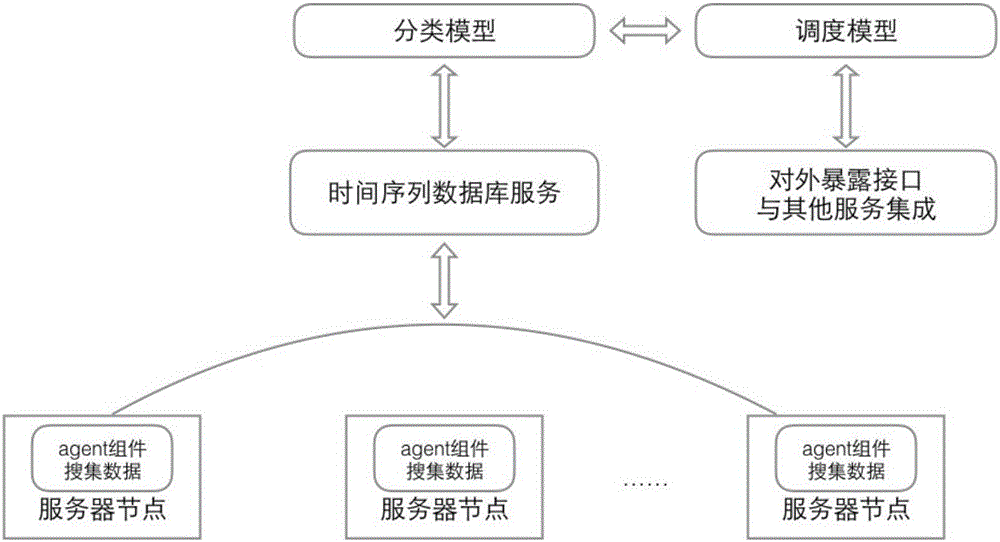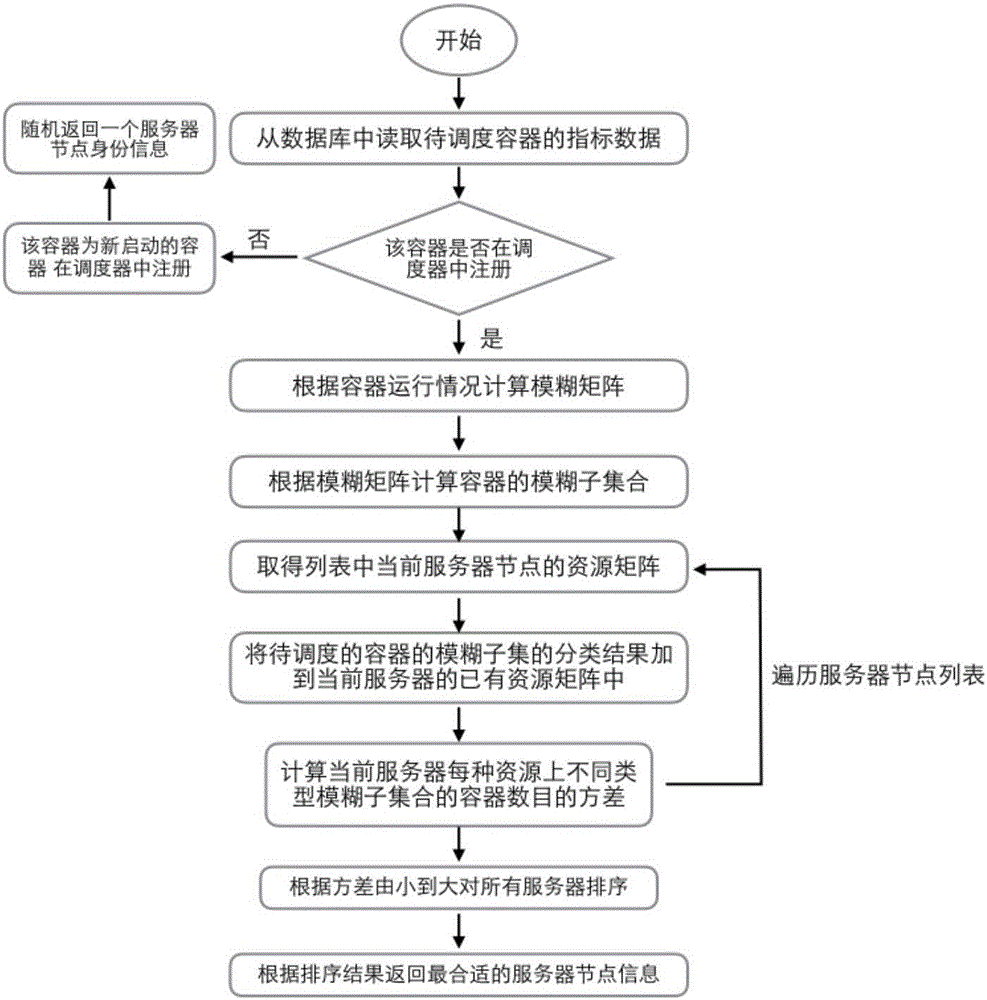Docker container cloud platform container scheduling method based on fuzzy mode recognition
A docker container and cloud platform technology, applied in the field of distributed cloud computing, can solve the problems of unclassified Docker containers and unreasonable scheduling of Docker containers.
- Summary
- Abstract
- Description
- Claims
- Application Information
AI Technical Summary
Problems solved by technology
Method used
Image
Examples
Embodiment Construction
[0037] The core of the present invention is to use fuzzy pattern recognition to classify Docker containers according to the resource status used during container operation, and according to these classification data, a container scheduling method based on fuzzy pattern recognition is proposed, which can be used from resource occupation Angles provide a basis for the scheduling of Docker containers, so that after the Docker containers are scheduled, various core resources on the server nodes can maintain a relatively balanced state. The method is mainly divided into the following four main steps: determination of classification model, collection of index information, classification of Docker containers, and scheduling of Docker containers.
[0038] 1. Determination of the classification model: use the theory of fuzzy recognition to determine the model of the classification algorithm. Specifically, it is necessary to determine the domain of discourse, fuzzy subsets and membership...
PUM
 Login to View More
Login to View More Abstract
Description
Claims
Application Information
 Login to View More
Login to View More - R&D
- Intellectual Property
- Life Sciences
- Materials
- Tech Scout
- Unparalleled Data Quality
- Higher Quality Content
- 60% Fewer Hallucinations
Browse by: Latest US Patents, China's latest patents, Technical Efficacy Thesaurus, Application Domain, Technology Topic, Popular Technical Reports.
© 2025 PatSnap. All rights reserved.Legal|Privacy policy|Modern Slavery Act Transparency Statement|Sitemap|About US| Contact US: help@patsnap.com



